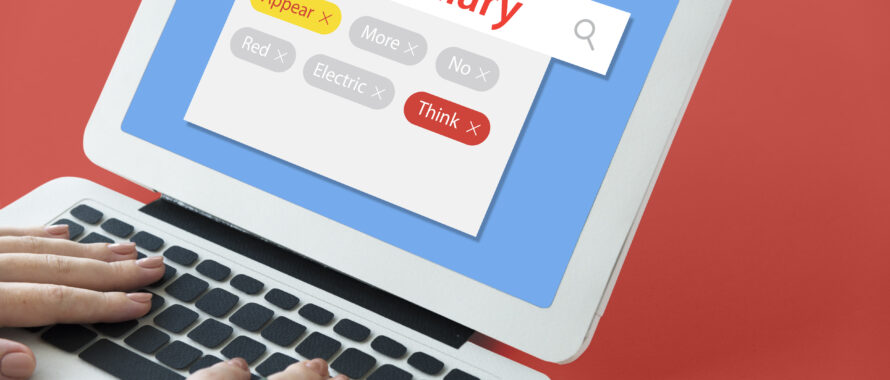Master the IELTS Academic Listening Test
Master the IELTS Academic Listening Test The IELTS Academic Listening Test is a crucial component of the International English Language Testing System (IELTS). This section evaluates your ability to understand spoken English in academic contexts, such as lectures, discussions, and interviews. Whether you’re preparing for university or looking to migrate to an English-speaking country, mastering this test is essential. In this blog, we will cover key strategies and tips that can help you score high on the IELTS Academic Listening Test. What is the IELTS Academic Listening Test? Test Format Overview The Listening Test consists of four sections, each with ten questions. The first two sections focus on general situations, such as social and everyday scenarios, while the last two sections involve more complex academic content. You will hear the recordings only once, so it’s important to pay close attention during each section. Types of Questions TIELTS Listening includes multiple-choice questions, sentence completion, matching, and diagram labeling. Understanding the different types of questions will help you know what to expect and how to answer effectively. Scoring System The Listening Test is scored on a scale of 0 to 9, with 9 being the highest score. Your score will be based on the number of correct answers you provide out of the total 40 questions. The raw score is then converted to the IELTS band score. It’s crucial to aim for a high score, especially if you are applying to universities or professional programs. Key Strategies to Master the IELTS Listening Test 1. Practice Active Listening To succeed in the IELTS Academic Listening Test, you need to practice listening skills, improve your concentration, and develop effective strategies for answering questions. Below are some proven techniques to enhance your listening abilities.Active listening is the process of fully concentrating on what is being said, rather than just passively hearing the words. Engage with the content by taking notes and trying to predict what will be said next. This approach will help you stay focused throughout the test and improve your overall listening skills. Improve Vocabulary and Spelling & Time Management A strong vocabulary is essential for understanding the wide range of topics you may encounter in the listening test. Make sure you are familiar with academic terminology and everyday expressions. Additionally, practice spelling, as some questions require you to write your answers. Incorrect spelling could cost you marks, even if the word is correct.The IELTS Listening Test is time-sensitive, so managing your time effectively is crucial. Practice pacing yourself so that you don’t run out of time during any section. Use the brief pause between sections to glance over the next set of questions and get ready for the next audio clip. Listen to a Variety of Accents & Take Practice Tests The IELTS Listening Test includes recordings from different English-speaking regions, such as the UK, the US, Australia, and Canada. To prepare for this, listen to podcasts, news, and other media in various accents. This will help you get accustomed to different pronunciation and intonation patterns.The best way to familiarize yourself with the test format and identify areas of weakness is to take regular practice tests. By doing so, you will not only improve your listening skills but also become more comfortable with the test’s structure and time constraints. Common Challenges in the IELTS Listening Test Struggling to Understand Accents Different English accents can be difficult to understand, especially if you’re not used to hearing them regularly. To overcome this challenge, expose yourself to various types of English-language media and practice listening to different accents. Difficulty with Multi-Tasking The IELTS Listening Test requires you to listen and read the questions at the same time, which can be challenging for some. To improve your multi-tasking ability, practice listening to recordings while reading and writing answers simultaneously. This will help you stay organized during the actual test Missed Information Due to Distractions The Listening Test is designed to be immersive, with audio recordings that may contain background noise, interruptions, or sudden changes in speaker tone. These factors can cause distractions and make it harder to focus. To overcome this, practice staying focused even when distractions occur and train yourself to listen for key details. Tips for Specific Question Types https://www.youtube.com/watch?v=VUtUOTrJ2Kk&pp=ygUoTWFzdGVyIHRoZSBJRUxUUyBBY2FkZW1pYyBMaXN0ZW5pbmcgVGVzdA%3D%3D Multiple-Choice Questions Multiple-choice questions often contain distractors, or incorrect options designed to confuse you. To answer these questions correctly, read the questions carefully, listen for key information, and eliminate the options that don’t match the audio. Focus on listening for specific details, such as names, dates, and locations. Fill-in-the-Blank Questions In fill-in-the-blank questions, you must write the missing word or words based on what you hear. These questions often require a specific word or phrase, so it’s essential to pay attention to spelling and word forms. Practice listening to audio recordings and writing down what you hear to improve your skills in this area. Matching Questions Matching questions require you to match information from the audio to a list of options. To approach these questions, listen for keywords and identify the relationships between the pieces of information. Keep track of which options have already been matched to avoid confusion. How to Stay Calm During the IELTS Listening Test Practice Relaxation Techniques Before the test, practice relaxation techniques such as deep breathing, meditation, or visualization. These methods can help you manage test anxiety and stay focused. Take Regular Breaks During Preparation When preparing for the Listening Test, take regular breaks to prevent burnout. Listening to long recordings without a break can lead to fatigue and reduced concentration. Schedule practice sessions that allow you to rest and recharge between listening tasks. Be Confident in Your Abilities Believe in your preparation and remind yourself that you’ve been practicing hard to master the test. Positive thinking and confidence can help you approach the test with a calm mindset, which can improve your performance. Conclusion The IELTS Academic Listening Test is a challenge, but with the right strategies, preparation, and mindset, you can succeed. Focus on improving your
- Shelby Academy
- 0 Comments
- January 29, 2025
Find the Right Tone for IELTS Letters
Find the Right Tone for IELTS Letters Finding the right tone for IELTS letters is crucial for achieving a high score in General Training Task 1. The tone of your letter depends on the recipient and the purpose of communication. Whether writing a formal, semi-formal, or informal letter, using the correct tone ensures clarity and appropriateness. In this blog, we will explore how to determine the right tone, key language tips, common tone-related mistakes, and provide a sample letter. Understanding Different Tones in IELTS Letters Formal Tone The IELTS Task 1 letter can be formal, semi-formal, or informal. Each tone has specific characteristics that must be followed. A formal tone is used when writing to someone in a professional capacity, such as a company, an employer, or an official authority. It should be polite, respectful, and avoid contractions. For example, instead of saying, “I can’t attend the meeting,” a formal tone would be, “I regret to inform you that I am unable to attend the meeting. Semi-Formal Tone A semi-formal tone is used when writing to someone you know in a professional or polite context, such as a landlord or a professor. It should maintain professionalism but allow for slight warmth. Using phrases like “I would appreciate your assistance” instead of “Could you help me?” makes the letter more suitable. Informal Tone An informal tone is used when writing to friends or family members. It allows contractions, phrasal verbs, and casual expressions. For example, “Hey John, just wanted to check if you’re free this weekend!” sounds much more natural than “Dear John, I am writing to inquire about your availability this weekend.” Language Tips for Using the Right Tone Choose the Right Greetings and Closings To ensure your IELTS letter uses the correct tone, follow these language tips.The greeting and closing set the tone of the letter. A formal letter should start with “Dear Sir/Madam” and end with “Yours sincerely.” A semi-formal letter can use “Dear Mr. Smith” and close with “Best regards.” An informal letter can start with “Hi John” and end with “See you soon.” Use Appropriate Vocabulary and Sentence Structure Word choice and sentence length impact the tone. Formal letters use precise, respectful language, while informal letters allow for contractions and everyday phrases. For instance, “I would be grateful if you could provide further details” is formal, while “Can you send me more info?” is informal. Maintain Consistency in Tone Mixing tones in one letter can confuse the reader. Avoid using formal language in an informal letter and vice versa. For example, writing “Dear Mr. Smith, Hey, how’s it going?” is inconsistent and should be avoided. Sticking to a single tone ensures clarity and professionalism. Common Mistakes When Choosing a Tone Using an Inappropriate Level of Formality Many IELTS test-takers lose marks due to tone-related mistakes. Here are some to avoid. One common mistake is being too formal in an informal letter or too casual in a formal letter. Writing “Dear Sir, How’s it going?” is incorrect. Always consider the relationship with the recipient before choosing your tone. Overusing or Underusing Politeness Formal letters should be polite, but excessive politeness can sound unnatural. Phrases like “I humbly request your esteemed guidance” are too elaborate. On the other hand, an informal letter should not sound overly stiff, like “I sincerely appreciate your response at your earliest convenience.” Ignoring Cultural and Contextual Nuances Cultural norms affect letter-writing styles. In some cultures, directness is appreciated, while in others, indirect language is preferred. Being aware of IELTS expectations ensures you strike the right balance between clarity and politeness. How to Practice Writing with the Right Tone https://www.youtube.com/watch?v=yNibn0NrbRg&pp=ygUlRmluZCB0aGUgUmlnaHQgVG9uZSBmb3IgSUVMVFMgTGV0dGVycw%3D%3D Analyze Sample Letters Improving your ability to write in the correct tone requires regular practice. Here are some effective methods. Reviewing Band 9 sample letters can help you understand tone variations. Identify key differences in vocabulary, structure, and style between formal, semi-formal, and informal letters. Rewrite Letters in Different Tones Take a formal letter and rewrite it in an informal tone, or vice versa. This exercise helps you recognize how language changes depending on the audience and context. Practicing tone shifts improves adaptability. Get Feedback and Adjust Your Writing Have a teacher or peer review your letters to check if your tone is appropriate. Constructive feedback helps identify errors and refine your approach, ensuring your IELTS letters sound natural and effective. Sample IELTS Letter Demonstrating the Right Tone Band 9 Sample Letter Hi Sarah, I’m so excited that you’re visiting next week! There are so many great places you should check out while you’re here. You definitely need to visit the city’s famous waterfront; it’s perfect for a morning walk. Also, the old town has amazing cafés and street art that I know you’ll love. For activities, you should try the boat tour—it’s a great way to see the skyline. If you’re up for something fun, there’s an escape room experience nearby that I think you’d enjoy. And of course, we have to grab dinner at that new Italian place I mentioned! Let me know when you arrive so we can plan something. I can’t wait to catch up and show you around! See you soon,Priya Conclusion Mastering the right tone for IELTS letters is essential for achieving a high band score. By understanding tone variations, using appropriate language, and avoiding common mistakes, you can ensure your letter aligns with the task requirements. Practicing with different tones and getting feedback will further enhance your writing skills. With the right approach, you can confidently write well-structured, high-scoring IELTS letters! https://youtu.be/bXFgneY_uAA Facebook Youtube X-twitter Whatsapp Linkedin Instagram Section Title Find the Right Tone for IELTS Letters ByPriya January 29, 2025 IELTS Find the Right Tone for IELTS Letters Finding the right tone for IELTS letters is crucial for… Read More Write High-Scoring Request Letters for IELTS ByPriya January 29, 2025 IELTS Write High-Scoring Request Letters for IELTS Writing a high-scoring request letter is essential for… Read More Effective Complaint Letters for IELTS Task 1 ByPriya
- Shelby Academy
- 0 Comments
- January 29, 2025
Write High-Scoring Request Letters for IELTS
Write High-Scoring Request Letters for IELTS Writing a high-scoring request letter is essential for achieving success in IELTS General Training Task 1. This task assesses your ability to communicate a request formally and effectively. A well-structured request letter should clearly state your purpose, maintain a polite and professional tone, and follow proper formatting. In this blog, we will explore the key elements of a Band 9 request letter, covering structure, language tips, common mistakes, and a sample response. Understanding the Structure of a Request Letter Salutation A well-organized request letter ensures clarity and readability. Follow this recommended format:A well-organized request letter ensures clarity and readability. Follow this recommended format:The salutation is the opening of your letter and should be formal. Use “Dear Sir/Madam” if the recipient’s name is unknown. If you have their name, address them properly, such as “Dear Mr. Smith.” A professional salutation sets a respectful tone. Avoid informal greetings like “Hi” or “Hello.” Introduction The introduction should briefly state the purpose of your letter. Mention why you are writing and provide any relevant details, such as dates or reference numbers. For example, “I am writing to request additional information about the upcoming training seminar on June 10th.” This immediately informs the recipient of your request. Body Paragraphs In the body paragraphs, expand on your request with specific details. Clearly explain what you need, why it is important, and how the recipient can assist you. If necessary, include supporting details like deadlines or alternative solutions. Keeping your message concise yet comprehensive ensures effectiveness. Language Tips for Writing Request Letters Use Polite and Formal Language To achieve a high band score, your language must be polite, clear, and professional. Here are some useful tips:A request letter should maintain a respectful tone. Phrases like “I would appreciate it if you could…” or “I kindly request…” convey politeness. Avoid commanding language like “Send me the details immediately.” Being courteous increases the chances of a positive response. Provide Clear and Specific Information Your request should be straightforward and detailed. Instead of writing, “I need some documents,” specify, “I need a copy of my lease agreement for the period of January to December 2024.” Providing precise details helps the recipient understand and process your request efficiently. Vary Sentence Structures A mix of sentence types demonstrates language proficiency. Use simple, compound, and complex sentences to enhance readability. For instance, “Although I contacted customer support last week, I have not yet received a response. Therefore, I would appreciate it if you could provide an update at your earliest convenience.” Sentence variety improves fluency and engagement. Common Mistakes to Avoid in Complaint Letters Being Too Demanding or Impolite Avoiding these common errors ensures a well-written request letter that meets IELTS criteria.An aggressive tone can make your request seem rude or unprofessional. Phrases like “I need this now” or “You must send it today” should be avoided. Instead, use polite requests like “I would be grateful if you could send it by tomorrow.” Failing to Include Necessary Details Vague or incomplete requests can lead to confusion and delays. Ensure you provide all relevant information, such as dates, locations, or reference numbers. For example, if requesting a meeting, specify the preferred date, time, and location. Ignoring Grammar and Spelling Errors Grammar and spelling mistakes lower the quality of your letter and can affect your band score. Always proofread your work before submission. Mistakes like incorrect verb tenses or missing punctuation can make your request unclear. Steps to Practice Writing Request Letters https://www.youtube.com/watch?v=0-ia9WBNcmY&pp=ygU1SG93IHRvIGFuc3dlciBSZXF1ZXN0IExldHRlciBpbiBJRUxUUyBXcml0aW5nIFRhc2sgMSA%3D Analyze Sample Prompts Practicing request letters can enhance your writing skills and boost your confidence. Follow these steps for improvement:Review different IELTS Task 1 prompts to identify the key requirements. Understanding how to structure responses based on different scenarios will help you prepare effectively. Take note of common themes such as requesting information, making arrangements, or seeking assistance. Practice Under Timed Conditions Practicing within the 20-minute time limit helps you develop speed and accuracy. Focus on covering all aspects of the prompt concisely. After completing a letter, review it to identify areas for improvement, such as clarity, grammar, and vocabulary usage. Seek Feedback Seek feedback from teachers, peers, or online forums. Constructive criticism can highlight areas for improvement, such as sentence structure or tone. Revising based on feedback ensures continuous improvement and readiness for the exam. Sample IELTS Informal Letter (With Band 9 Example) Band 9 Sample Letter Dear Sir/Madam, I am writing to request a copy of the presentation materials from the Business Innovation Conference held on January 15th, 2025. Specifically, I am interested in the slides and notes from the keynote session on digital transformation. As a marketing professional, I found the session extremely insightful, and I believe these materials would help me implement new strategies in my organization. Unfortunately, I was unable to take detailed notes during the presentation. Having access to the slides and supplementary materials would be invaluable for my professional development. I would appreciate it if you could email the materials to my registered conference email address or provide a link for download. If there are any additional steps I need to take, please let me know. Thank you for your assistance. Yours sincerely,Priya R. Conclusion Writing an effective request letter for IELTS Task 1 requires clarity, proper structure, and a polite tone. By following the strategies outlined in this blog, you can confidently craft high-scoring request letters that meet IELTS criteria. Regular practice and careful proofreading will further enhance your skills. With the right approach, achieving a Band 9 in this task is entirely possible! https://youtu.be/bXFgneY_uAA Facebook Youtube X-twitter Whatsapp Linkedin Instagram Section Title Write High-Scoring Request Letters for IELTS ByPriya January 29, 2025 IELTS Write High-Scoring Request Letters for IELTS Writing a high-scoring request letter is essential for… Read More Effective Complaint Letters for IELTS Task 1 ByPriya January 28, 2025 IELTS Effective Complaint Letters for IELTS Task 1 Writing an effective complaint letter is a crucial… Read More Master Band 9 IELTS Informal Letters for General
- Shelby Academy
- 0 Comments
- January 29, 2025
Effective Complaint Letters for IELTS Task 1
Effective Complaint Letters for IELTS Task 1 Writing an effective complaint letter is a crucial skill for IELTS General Training Task 1. This type of letter tests your ability to communicate formally and persuasively while addressing a problem or dissatisfaction. To score well, you need to convey your message clearly, maintain a polite but firm tone, and structure your letter logically. In this blog, we’ll explore the essential elements of writing a Band 9-worthy complaint letter, including structure, language tips, and common pitfalls to avoid. Understanding the Structure of a Complaint Letter Salutation The salutation is an important part of your letter as it sets the tone. Always begin with a formal greeting such as “Dear Sir/Madam” if you do not know the recipient’s name. If you have their name, address them by their last name, for example, “Dear Mr. Smith.” Using a formal salutation ensures a professional start to your letter. Avoid informal greetings such as “Hi” or “Hello” when writing complaint letters. Introduction In the introduction, you need to clearly explain why you are writing. This paragraph should include the nature of your complaint and any relevant details such as the date or place where the issue occurred. For example, you could write, “I am writing to express my dissatisfaction with the service I received at your restaurant on January 15th, 2025.” Be concise but ensure you provide enough context for the reader. Body Paragraphs The body paragraphs form the main content of your complaint letter. In the first paragraph, describe the issue in detail, providing specific facts like dates, times, or reference numbers. Avoid exaggerating the problem but ensure the impact is clear. In the second paragraph, state your expectations for resolution, such as a refund, replacement, or apology. Use polite and professional language to assert your needs. Language Tips for Writing Effective Complaint Letters Use Polite but Firm Language Using polite but firm language is key to writing an effective complaint letter. Avoid using aggressive or overly emotional words, as they can come across as unprofessional. Instead, use polite phrases such as “I regret to inform you that…” or “I would appreciate it if you could…” These phrases help maintain a professional tone while conveying your dissatisfaction. Include Specific Details Adding specific details strengthens your complaint and makes it easier for the recipient to understand the issue. For example, instead of saying “The product doesn’t work,” you could write, “The washing machine I purchased from your store on December 5th stopped working within two weeks of use.” Specific details show that your complaint is valid and based on facts. Use a Variety of Sentence Structures Demonstrating a range of sentence structures is essential for achieving a high band score. Use a mix of simple, compound, and complex sentences to showcase your language proficiency. For instance, you might write, “Although I contacted your customer service team on three occasions, I have yet to receive a satisfactory response.” This variation keeps your writing engaging and professional. Common Mistakes to Avoid in Complaint Letters Being Too Emotional or Aggressive One common mistake is allowing emotions to take over when writing a complaint letter. While frustration is understandable, using aggressive language such as “This is unacceptable” or “I demand” can come across as rude. Instead, focus on remaining professional and constructive. A polite but firm tone is more likely to yield positive results. Ignoring the Task Requirements Another mistake is failing to address all parts of the IELTS prompt. For instance, if the task requires you to describe the issue, explain its impact, and suggest a resolution, ensure you cover all three aspects. Skipping any part of the task can negatively affect your score. Carefully read the prompt and plan your response accordingly. Overlooking Grammar and Spelling Grammar and spelling errors can significantly lower your band score. To avoid this, proofread your letter thoroughly before submitting it. Check for common mistakes such as subject-verb agreement or incorrect punctuation. Using tools or asking for feedback can help ensure your letter is error-free and well-written. Steps to Practice Writing Complaint Letters https://www.youtube.com/watch?v=Pd4UlwWqDnI&pp=ygUsRWZmZWN0aXZlIENvbXBsYWludCBMZXR0ZXJzIGZvciBJRUxUUyBUYXNrIDE%3D Analyze Sample Prompts Practicing complaint letters can help improve your writing skills and confidence. Follow these steps to prepare effectively:Start by reviewing a variety of IELTS Task 1 prompts. Identify key details such as the purpose of the letter and the information required. Analyzing prompts helps you understand what examiners expect. This practice can also inspire ideas for structuring your response effectively. Practice Under Timed Conditions Simulate exam conditions by writing practice letters within the 20-minute time limit. Focus on addressing all parts of the task. Timed practice helps you manage time effectively during the actual exam. Review your work afterward to identify areas for improvement. Seek Feedback Share your letters with teachers, peers, or online communities for constructive feedback. Others can point out errors you may have missed and suggest improvements. Incorporate their suggestions into your writing. This iterative process can refine your skills over time. Sample IELTS Informal Letter (With Band 9 Example) Band 9 Sample Letter Dear Sir/Madam, I am writing to express my dissatisfaction with a product I purchased from your store on January 10th, 2025. The item in question is a smartphone (Model: XYZ-123), which stopped functioning correctly within five days of purchase. The phone initially worked well, but it began shutting down randomly despite being fully charged. Additionally, the touchscreen frequently becomes unresponsive, making it impossible to use. These issues have caused significant inconvenience, as I rely on the phone for both personal and professional communication. I request a full refund or a replacement device at the earliest possible convenience. Enclosed are copies of the receipt and warranty card for your reference. I trust you will resolve this matter promptly to maintain your store’s reputation for excellent customer service. I look forward to your reply. Yours faithfully,Priya R. Conclusion Writing informal letters for the IELTS exam doesn’t have to be daunting. By following the simple guidelines outlined in this guide, you can ensure
- Shelby Academy
- 0 Comments
- January 28, 2025
Master Band 9 IELTS Informal Letters for General Training
Master Band 9 IELTS Informal Letters for General Training Achieving a Band 9 in the IELTS General Training Writing test requires a strong grasp of informal letter writing. These tasks test your ability to communicate effectively in a casual yet structured manner. To excel, focus on understanding the tone and purpose of the letter. Understanding the IELTS Informal Letter Format The Structure of an Informal Letter The structure of an informal letter in IELTS follows a clear and straightforward format. It typically begins with a greeting such as “Dear [Name],” or “Hi [Name],” depending on the closeness of your relationship. The introduction should state the reason for writing, keeping it concise and direct. In the body of the letter, aim to include 2-3 paragraphs, where you elaborate on the details relevant to the topic or request mentioned in the task. Keep these paragraphs organized and focused. Lastly, the closing should be friendly and informal, with phrases like “Best wishes,” “Take care,” or “See you soon.” This structure is easy to follow and ensures clarity. Remember, though the tone is informal, ensure it remains respectful and warm, reflecting the relationship you have with the recipient. A well-structured letter enhances readability and helps convey your message effectively. The Importance of Tone and Language Tone and language play a significant role in the success of your informal letter. Since you’re writing to a friend, family member, or someone you know well, the tone must be casual, friendly, and approachable. The use of contractions, such as “I’m” instead of “I am,” helps maintain a conversational tone. Additionally, incorporating idiomatic expressions and colloquial language, as long as it fits the context, adds authenticity to your writing. Avoid sounding overly formal or distant. While you want to appear respectful, using too formal language may result in an unnatural letter. The key is to be warm and engaging, reflecting the ease and closeness of your relationship with the reader. Overall, the tone should be consistent and convey your message in a clear, pleasant, and informal manner, making your letter feel like a natural communication.. Key Points to Remember About Informal Letters When writing informal letters, there are a few essential points to remember. First, always address the recipient by their first name—this helps establish an informal and personal tone. Next, make sure your greeting and sign-off are appropriate for the nature of the letter. For example, “Dear [Name]” is a common greeting, and you can end with a friendly “Best wishes” or “Take care.” It’s also crucial to keep your writing clear and concise; avoid rambling and stay on topic. Ensure that your letter remains well-organized, with each paragraph having a clear purpose. It’s helpful to start with a brief introduction explaining the reason for writing, followed by a main body with more details, and finish with a warm and friendly conclusion. Lastly, review your letter for grammar and spelling mistakes to ensure it reads smoothly. How to Plan Your Informal Letter Read the Question Prompt Carefully The first step in writing a successful informal letter is to fully understand the IELTS prompt. Before you begin writing, carefully read the question to identify the key points that need to be addressed. Typically, an IELTS informal letter prompt will specify the recipient, the purpose of writing, and any specific details you should include in the letter. Pay close attention to instructions such as whether you need to ask for advice, give advice, or share an experience. By understanding the prompt thoroughly, you’ll ensure that you don’t miss out on any important elements that are critical for fulfilling the task. Additionally, take note of the word limit. Being aware of the required length will help you avoid over-explaining or under-explaining your points. Reading carefully ensures that your letter is on-topic and meets the requirements set by the examiner. Brainstorm Your Ideas Before diving into writing, spend a few minutes brainstorming your ideas. This step is essential for organizing your thoughts and ensuring that your letter is well-developed and cohesive. Jot down any points or ideas that come to mind related to the prompt. Think about the details you want to include in the body of your letter and how they connect to the purpose of your writing. For instance, if the task asks you to describe a recent trip, you may brainstorm different experiences, such as places visited or activities enjoyed. This process allows you to gather ideas, prioritize the most important ones, and eliminate any irrelevant information. Once you have your ideas listed, you can decide which ones to elaborate on in the letter. Effective brainstorming ensures that your letter remains focused and covers all the necessary aspects of the prompt. Create an Outline Creating a brief outline for your informal letter is a helpful step that will guide your writing process. An outline allows you to structure your thoughts logically, ensuring that you don’t miss any key components of the letter. Start with the introduction where you introduce the reason for your letter, making it concise and to the point. Next, outline the body paragraphs, where you’ll provide the details required by the task. For example, if you’re writing about an event, list the specific details you plan to include, such as dates, people involved, or your thoughts about the experience. Finish with a conclusion, which can include a closing statement or a question for the reader. By creating an outline, you maintain focus, reduce the risk of diverging off-topic, and improve the overall flow of the letter. This preparation step also saves time during the actual writing process. Common Mistakes in Informal Letters and How to Avoid Them Using Overly Formal Language A common mistake in informal letter writing is using language that is too formal for the situation. Since informal letters are meant for friends, family, or acquaintances, the language should reflect a more personal and casual tone. Avoid using complex sentence structures or formal vocabulary that you might use in an academic essay.
- Shelby Academy
- 0 Comments
- January 28, 2025
Address Semi-Formal IELTS Letters Effectively
Address Semi-Formal IELTS Letters Effectively Mastering semi-formal letters is an essential skill for achieving a high band score in the IELTS Writing test. These letters require a balanced tone that is neither too formal nor overly casual. In this blog, we will break down the key components of semi-formal letters, tips to write them effectively, and practice strategies for success. Understanding Semi-Formal Letters What is a Semi-Formal Letter? TSemi-formal letters lie between formal and informal styles. These letters are typically written to someone you know but do not share a close relationship with, such as a colleague, neighbor, or a service provider. The tone should be respectful yet approachable, demonstrating a good command of polite language. When crafting a semi-formal letter, clarity and appropriateness are key. For instance, addressing a neighbor about a community event requires a tone that shows warmth but also professionalism. Understanding this balance will help you excel in this task. Common Scenarios for Semi-Formal Letters Semi-formal letters are required in a variety of scenarios in IELTS, including: Requesting information or services from someone you know. Apologizing for a mistake or inconvenience. Offering invitations to an event or gathering. Expressing gratitude for assistance or support. Making suggestions or providing feedback. By recognizing these situations, you can prepare better by practicing relevant letter types that match the semi-formal tone. The Role of Tone and Language The language in semi-formal letters is critical. It should be polite but not excessively formal. Phrases like “I hope this message finds you well” or “I would like to kindly request” are appropriate for this style. Avoid slang or overly casual terms like “Hey” or “Thanks a bunch,” which may diminish the professionalism of your writing. Key Elements of a Semi-Formal Letter Proper Salutations and Closings Begin your letter with an appropriate salutation. Use phrases like “Dear Mr. Smith” or “Dear Mrs. Johnson” instead of overly formal or informal greetings. At the end, close with phrases such as “Best regards” or “Yours sincerely.” The salutation and closing reflect your awareness of the reader’s status and set the tone of the letter. Missteps here can make the letter seem mismatched for the task. Structuring the Letter A semi-formal letter should follow a clear structure: Introduction: Mention the purpose of the letter. Body Paragraphs: Elaborate on the main points with clarity and politeness. Conclusion: Summarize the letter and include a polite closing remark. Maintaining this structure ensures the letter is organized and easy to follow, a crucial factor in achieving high readability scores. Grammar and Vocabulary Focus on accurate grammar and a wide range of vocabulary. Use sentence structures like conditional sentences (“If you could provide further details, it would be greatly appreciated”) or passive voice (“This matter should be resolved promptly”) to showcase your linguistic skills. To enhance your vocabulary, practice synonyms for common phrases. For example, instead of saying “thank you,” you could use “I am truly grateful.” This variety can make your writing more engaging and demonstrate language proficiency. Tips to Write Semi-Formal Letters Effectively Analyze the Task Prompt Before you start writing, carefully read the task prompt. Identify the purpose of the letter, the recipient, and the key points to address. Highlighting these details can help you stay on track and write a focused response. Spend at least 2-3 minutes planning your letter. A clear plan will save time and reduce the likelihood of missing essential information. Practice Politeness Politeness is the hallmark of a semi-formal letter. Use phrases like “I would appreciate it if you could…” or “Thank you for your understanding” to convey respect. Avoid overly directive language, which can come across as rude. Balancing politeness with clarity ensures your letter is received positively and fulfills the task requirements. Practicing model phrases will help you achieve this balance naturally. Stay Within the Word Count The IELTS Writing test requires candidates to write at least 150 words. Aim for 160-180 words to stay within the recommended range while covering all points. Excessively long letters risk losing focus, while shorter responses may miss key elements. To manage your word count effectively, avoid repetition and focus on concise, impactful sentences. Editing your drafts can also help eliminate unnecessary words or ideas. Practice Strategies for Success https://www.youtube.com/watch?v=p9ey5eg08nw&pp=ygUtQWRkcmVzcyBTZW1pLUZvcm1hbCBJRUxUUyBMZXR0ZXJzIEVmZmVjdGl2ZWx5 Study Sample Letters Reviewing high-quality sample letters is an excellent way to learn the nuances of semi-formal writing. Pay attention to how they balance tone, structure, and vocabulary. Analyze why certain phrases or expressions are used and how they align with the letter’s purpose. While studying samples, try rewriting them in your own words to internalize the style. This active engagement reinforces learning. . Get Feedback Share your practice letters with teachers, peers, or online writing forums to receive constructive feedback. This feedback can help identify areas for improvement, such as tone, grammar, or organization. Use the feedback to refine your writing and address recurring mistakes. Consistent improvement is key to mastering semi-formal letters. Practice Regularly Consistent practice is the cornerstone of success in the IELTS Writing test. Set aside time each week to write semi-formal letters based on different prompts. Gradually increase the complexity of the scenarios to build confidence. Pair your practice with timed exercises to simulate test conditions. This will help you manage your time effectively during the exam and reduce stress. Common Mistakes to Avoid Overusing Informal Language Using overly casual expressions or slang can make your letter appear inappropriate for a semi-formal context. Always aim for respectful and neutral language. To avoid this mistake, familiarize yourself with polite phrases and expressions. Practice incorporating them into your writing. Ignoring Task Requirements Failing to address all parts of the task prompt can lead to a lower score. Ensure you cover every point mentioned in the question. Carefully reread your letter before submission to confirm all key elements are included. Highlighting or underlining the task prompts during planning can also help. Forgetting to Proofread Errors in grammar, spelling, or punctuation can detract from the overall quality of your letter. Take a few minutes
- Shelby Academy
- 0 Comments
- January 28, 2025
Master Semi-Formal Letters in IELTS Task 1
Master Semi-Formal Letters in IELTS Task 1 The IELTS Writing Task 1 requires candidates to demonstrate their ability to compose different types of letters effectively. Among the three main types—formal, informal, and semi-formal letters—semi-formal letters often challenge candidates due to their balanced tone and format. Mastering semi-formal letters is critical for achieving a high band score in this section. In this blog, we will dive into understanding semi-formal letters, their structure, and tips for crafting them successfully. Understanding Semi-Formal Letters Definition and Purpose Semi-formal letters are typically written in situations requiring both politeness and familiarity. Common purposes include inviting someone, requesting information, or giving advice. The ability to balance a friendly tone with a professional one is key to writing effective semi-formal letters. These letters aim to bridge the gap between casual and professional communication, ensuring clarity while maintaining a respectful tone.. Differences Between Semi-Formal and Other Letter Types Formal letters are strictly professional, focusing on objectivity and correctness. For instance, writing to a company or addressing a government official requires a highly formal tone. On the other hand, informal letters are casual and written to close friends or family, often emphasizing emotional connection and personal anecdotes. Semi-formal letters, however, require a balance between the two, reflecting familiarity with a recipient while maintaining a respectful and polished tone. This balance makes semi-formal letters uniquely challenging but crucial for IELTS preparation. Examples of Semi-Formal Situations There are various contexts in which semi-formal letters are applicable. For example, you might write to your neighbor about a shared concern, such as noise disturbances or parking issues. Another instance could be inviting a teacher or colleague to a social or professional event. Apologizing to someone you know but aren’t closely acquainted with is another common situation that requires a semi-formal tone. Recognizing these scenarios helps in tailoring your letter to meet the expectations of IELTS examiners. Structure of a Semi-Formal Letter Opening Salutation The salutation sets the tone of the letter. In semi-formal letters, use “Dear Mr./Ms. [Last Name]” if you are less familiar with the recipient or “Dear [First Name]” if you have a moderately close relationship. Avoid overly casual greetings like “Hi” or “Hello,” as these can diminish the semi-formal tone. The salutation should immediately indicate respect while acknowledging familiarity. Main Body The main body of the letter is where you communicate your message effectively. It should include three paragraphs, each focusing on a specific point. In the first paragraph, state the purpose of the letter clearly, ensuring that the recipient understands the reason for your communication. The second paragraph should provide relevant details or explanations, elaborating on the purpose outlined in the introduction. Finally, conclude with an appropriate call to action or closing remarks, guiding the recipient on what steps to take next. Each paragraph should flow logically into the next, creating a cohesive narrative. Closing Salutation The closing salutation is just as important as the opening. Use “Yours sincerely” if you know the recipient’s name or “Best regards” for a slightly less formal touch. Avoid overly casual closings like “Cheers,” which can disrupt the semi-formal tone. The closing salutation should reinforce the polite and respectful nature of your letter while leaving a positive impression on the reader. Essential Vocabulary for Semi-Formal Letters Commonly Used Phrases Certain phrases are particularly effective in semi-formal letters. For instance, when extending invitations, you might say, “I would like to invite you to…” This phrasing is polite yet approachable. When making requests, consider using “I was wondering if you could…” which strikes a balance between politeness and friendliness. Similarly, for apologies, “I sincerely apologize for…” conveys genuine regret without sounding overly formal. Transition Words and Connectors Transition words and connectors play a vital role in ensuring the flow of your letter. Words like “furthermore,” “however,” “therefore,” “in addition,” and “nevertheless” help in linking ideas seamlessly. These connectors not only enhance readability but also demonstrate your command over cohesive writing, a key criterion in the IELTS writing assessment. Example Sentences Incorporating example sentences can guide you in framing your thoughts. For instance, “I am writing to bring to your attention…” is a polite way to highlight an issue. Similarly, “Thank you for your understanding and cooperation” is an excellent closing remark that leaves a positive impression. Another example could be, “I hope this information will be helpful,” which adds a touch of friendliness to your tone. Sample Semi-Formal Letter https://www.youtube.com/watch?v=1bX_8F7O5HQ&pp=ygUqTWFzdGVyIFNlbWktRm9ybWFsIExldHRlcnMgaW4gSUVMVFMgVGFzayAx Prompt: Write a letter to your neighbor to discuss a parking issue. Response: Dear Mr. Smith, I hope this letter finds you well. I am writing to discuss an issue regarding the parking space outside our apartment complex. Recently, I have noticed that the designated parking spots are frequently occupied, making it difficult for residents to park their vehicles. While I understand that visitors may occasionally use these spaces, the frequency has increased significantly. This situation has caused inconvenience to several residents, including myself. I would like to propose a meeting to address this concern and suggest possible solutions. Perhaps we could implement a parking schedule or assign specific spots to each resident. I believe this would help resolve the issue effectively. Thank you for your understanding and cooperation. Please let me know a convenient time to discuss this further. Yours sincerely,John Doe Common Mistakes to Avoid Misjudging the Tone Using an overly formal or casual tone can lead to confusion and lower scores. Practice writing letters with a balanced tone to build confidence. For instance, avoid overly formal language like “It is my utmost honor to bring to your attention…” Instead, aim for neutral phrasing that maintains clarity and respect. Ignoring the Prompt Failing to address all parts of the question can result in a lower score. Ensure you cover every point mentioned in the prompt. Carefully reading and analyzing the question helps you structure your response appropriately, leaving no part unanswered. Lack of Organization A poorly organized letter is difficult to follow. Stick to the recommended structure and use paragraphs effectively. Each paragraph
- Shelby Academy
- 0 Comments
- January 28, 2025
Tips for High Scores on IELTS Informal Letters
Tips for High Scores on IELTS Informal Letters The IELTS Writing Task 1 challenges candidates to showcase their ability to compose letters of various types—formal, semi-formal, and informal. Informal letters, in particular, test your ability to communicate in a casual yet coherent tone, often addressed to friends or family members. Scoring high on this task requires mastering the nuances of informal writing, understanding the format, and using language that conveys warmth and familiarity while adhering to IELTS standards. This guide will walk you through the essential aspects of writing effective informal letters, ensuring you secure the score you aim for. What Are Informal Letters in IELTS? Common Scenarios for Informal Letters Informal letters in IELTS are usually centered around familiar, everyday situations. You might be asked to write a letter congratulating a friend on an achievement, apologizing for missing an event, inviting someone to a gathering, or describing a memorable trip. These scenarios allow you to demonstrate your creativity and personality while following the task’s requirements. Recognizing the context of the prompt is crucial, as it helps you tailor your language and tone appropriately. Differences Between Informal and Formal Letters While formal letters focus on professionalism and objectivity, informal letters emphasize personal connection and warmth. For example, a formal letter might begin with “Dear Sir/Madam,” while an informal letter typically starts with “Dear [Name]” or even “Hi [Name].” The language in informal letters is more conversational, incorporating contractions (e.g., “I’m,” “can’t”) and colloquial phrases. Additionally, informal letters often feature personal anecdotes and expressions of emotion, which are not typically found in formal writing. Understanding these differences helps you adapt your writing style to suit the task at hand. Tone and Language of Informal Letters The tone of an informal letter is relaxed and engaging. While you can use casual language, it’s important to avoid slang or overly informal expressions that might be unclear to the examiner. Phrases like “It’s been ages since we last caught up!” or “I’m so thrilled for you!” reflect a warm and friendly tone, which is ideal for informal letters. Striking the right balance between casual and clear communication ensures that your letter is both natural and effective. Structure of an Informal Letter Opening Salutation The salutation in an informal letter sets the tone for the rest of the message. Use greetings like “Dear [Name]” or “Hi [Name]” to begin your letter. This creates an immediate sense of familiarity and warmth, which is key in informal writing. Avoid overly formal phrases, as they can disrupt the relaxed tone of your letter. Introduction & Main Body The introduction should establish the purpose of the letter and provide a warm opening. For example, you could start by saying, “I hope this letter finds you well,” or “It’s been so long since we last spoke, and I wanted to catch up!” This opening not only sets a friendly tone but also gives context to the letter, helping the reader understand its intent right away.The main body of your letter should be divided into two to three paragraphs, each focusing on a specific point. For instance, if you’re inviting a friend to a party, one paragraph could describe the event, another could provide details like the date and location, and a third could express your excitement about their potential attendance. Keeping each paragraph focused on a single idea ensures that your letter remains coherent and easy to follow. Closing and Sign-Off The closing of an informal letter should leave the reader with a sense of warmth and anticipation. Use phrases like “Looking forward to hearing from you soon!” or “Can’t wait to catch up!” before signing off. For the sign-off, casual phrases like “Best wishes,” “Take care,” or simply “Cheers” work well, depending on your relationship with the recipient. Tips for Crafting High-Scoring Informal Letters Understand the Prompt Carefully read the prompt to identify the purpose of the letter and the points you need to address. Each bullet point in the task represents a key idea that must be included in your letter. Missing any of these points can result in a lower score, so ensure that your response fully addresses the prompt. Use a Conversational Tone The tone of an informal letter should mimic natural conversation. Write as if you were speaking to the recipient in person, but maintain grammatical accuracy and clarity. Phrases like “I was so excited to hear about your news!” or “You won’t believe what happened the other day!” create an engaging and authentic tone. Maintain Grammar and Vocabulary Accuracy While informal letters allow for a relaxed tone, your grammar and vocabulary must still meet the high standards of the IELTS exam. Avoid careless errors and use a range of sentence structures to demonstrate your language proficiency. Incorporating phrasal verbs, idiomatic expressions, and appropriate vocabulary adds depth to your writing without making it overly complex. Sample Informal Letter https://www.youtube.com/watch?v=BatxmusqHvc&pp=ygUuVGlwcyBmb3IgSGlnaCBTY29yZXMgb24gSUVMVFMgSW5mb3JtYWwgTGV0dGVycw%3D%3D Sample Informal Letter Prompt: Write a letter to your friend about a recent trip you took. Response: Hi Emma, I hope you’re doing great! It’s been ages since we last talked, and I’ve missed hearing all about your adventures. I just got back from the most amazing trip to the Maldives, and I couldn’t wait to share the experience with you. The beaches were breathtaking, with crystal-clear water and powdery white sand. I spent my days snorkeling, exploring vibrant coral reefs, and soaking up the sun. One evening, we even had dinner on the beach under a sky full of stars—it was magical! I kept thinking how much you’d have loved it there. By the way, I picked up a little souvenir for you. It’s a handmade bracelet from a local market—I think it’ll look perfect on you! Let me know when we can meet so I can give it to you and tell you more about the trip. Take care and write back soon! I’m dying to hear all your news. Best wishes,Sophia Common Mistakes to Avoid Overly Casual Language Avoiding common mistakes can
- Shelby Academy
- 0 Comments
- January 28, 2025
Write Semi-Formal Letters for IELTS Task 1
Write Semi-Formal Letters for IELTS Task 1 Semi-formal letters in IELTS Writing Task 1 require a balanced tone that is neither too casual nor overly formal. These letters are typically addressed to someone you know, but not very well, such as a landlord, a colleague, or a distant acquaintance. Writing a semi-formal letter involves using appropriate vocabulary, maintaining a polite tone, and structuring your letter effectively. Understanding Semi-Formal Letters in IELTS The Importance of Tone Semi-formal letters serve various purposes, such as making requests, giving explanations, or extending invitations. The tone should reflect a sense of respect while maintaining a friendly approach. To achieve a high band score, candidates need to focus on clarity, coherence, and appropriate vocabulary. The tone of a semi-formal letter is what distinguishes it from formal or informal letters. It should strike a balance between professionalism and friendliness. Avoid using slang or overly casual expressions, as these can detract from the semi-formal tone. Instead, opt for polite yet conversational language. Addressing the Recipient In a semi-formal letter, you typically address the recipient by their first name or with a title and last name, depending on your level of familiarity. For example, “Dear Mr. Smith” or “Dear Sarah” are both appropriate, but “Hey Sarah” would be too casual. Conveying Clarity Clear communication is essential in a semi-formal letter. Use straightforward sentences and organize your thoughts logically. Avoid overly complex language or jargon that might confuse the recipient. How to Structure a Semi-Formal Letter The Introduction A well-structured semi-formal letter includes three main sections: the introduction, the body, and the conclusion. Each section serves a specific purpose and contributes to the overall coherence of the letter. The introduction should clearly state the purpose of the letter. For instance, if you are writing to request a favor, you might start with, “I hope this message finds you well. I am writing to ask for your assistance with…” This sets the context for the rest of the letter. The Body The body is where you elaborate on the purpose of your letter. Divide this section into multiple paragraphs, each focusing on a specific point. For example, if you are inviting someone to an event, one paragraph might provide details about the event, while another explains why their presence is important. The Conclusion The conclusion should summarize your main points and include a call to action if necessary. For example, “I look forward to hearing from you soon” or “Please let me know if you need any additional information.” This ensures that the recipient understands what is expected of them. Vocabulary for Common Situations Making Requests Using appropriate vocabulary is crucial for achieving a high band score in IELTS Writing Task 1. Below are examples of phrases and expressions suitable for various scenarios in semi-formal letters.When making a request, it is important to sound polite and considerate. Phrases such as “Would you mind…” or “Could you please…” are effective. For example, “Would you mind helping me with the preparations for the meeting?” Giving Explanations If your letter involves explaining a situation, use phrases like “I would like to explain…” or “The reason for…” For instance, “I would like to explain why I was unable to attend the meeting last week. Expressing Gratitude Gratitude can be expressed using phrases like “I truly appreciate…” or “Thank you so much for…” For example, “I truly appreciate your support during the project.” Tips for Writing Semi-Formal Letters https://www.youtube.com/watch?v=rVC-ET8e0sU&pp=ygUsV3JpdGUgQmFuZCA5IEZvcm1hbCBMZXR0ZXJzIGZvciBJRUxUUyBUYXNrIDE%3D Be Polite To excel in writing semi-formal letters, practice is essential. The following tips can help you improve your skills and achieve a higher band score.Politeness is key in semi-formal letters. Even if you are addressing a problem or complaint, maintain a respectful tone. Use phrases like “I am writing to bring to your attention…” instead of “I need to complain about…” Use Linking Words Linking words such as “However,” “In addition,” and “Therefore” help to connect your ideas and make your letter more cohesive. For example, “In addition to the details mentioned earlier, I would like to highlight…” Proofread Your Work Errors in grammar, spelling, and punctuation can negatively impact your score. Always proofread your letter to ensure that it is free from mistakes. Reading it aloud can help identify areas that need improvement. Common Mistakes to Avoid Overly Casual Language Avoiding common mistakes can significantly improve the quality of your semi-formal letters. Below are some pitfalls to watch out for.While semi-formal letters are less rigid than formal ones, using overly casual language can lower your score. Avoid phrases like “Hey there” or “What’s up,” and opt for more professional expressions. Lack of Clarity Ambiguous or unclear statements can confuse the recipient. Make sure that your ideas are expressed clearly and concisely. For example, instead of “I need help with something,” specify, “I need help with preparing the presentation for next week.” Ignoring the Word Count IELTS Writing Task 1 requires a response of at least 150 words. Falling short of this limit can lead to a lower score. Practice writing letters within the word limit to ensure that you meet this requirement during the exam. Conclusion Writing semi-formal letters for IELTS Task 1 requires a clear understanding of tone, vocabulary, and structure. By maintaining a balance between friendliness and professionalism, you can create letters that meet the requirements for a high band score. Regular practice and attention to detail are essential for mastering this skill. Remember, every letter is an opportunity to showcase your language proficiency and improve your chances of success in the IELTS exam. https://youtu.be/bXFgneY_uAA Facebook Youtube X-twitter Whatsapp Linkedin Instagram Section Title Write Semi-Formal Letters for IELTS Task 1 ByPriya January 27, 2025 IELTS Write Semi-Formal Letters for IELTS Task 1 Semi-formal letters in IELTS Writing Task 1 require a… Read More Band 7+ Vocabulary for IELTS Formal Letters ByPriya January 27, 2025 IELTS Band 7+ Vocabulary for IELTS Formal Letters Writing a formal letter for the IELTS exam can be a… Read More Top Tips for IELTS General Formal Letters
- Shelby Academy
- 0 Comments
- January 27, 2025
Band 7+ Vocabulary for IELTS Formal Letters
Band 7+ Vocabulary for IELTS Formal Letters Writing a formal letter for the IELTS exam can be a daunting task, especially when aiming for a Band 7 or higher. One of the key factors in achieving this score is the ability to use a range of vocabulary effectively and appropriately. This guide will help you enhance your vocabulary and structure your formal letters in a way that impresses examiners. Why Vocabulary Matters in IELTS Formal Letters The Role of Formality Vocabulary plays a crucial role in IELTS Writing Task 1 formal letters. Achieving a Band 7 or above requires candidates to demonstrate their ability to use varied and precise language. Formal letters often involve addressing specific situations, such as making a complaint, requesting information, or offering an explanation. The choice of words must align with the tone and purpose of the letter. A well-structured letter with appropriate vocabulary not only conveys professionalism but also ensures clarity and coherence. Precision and Clarity Precision in language helps convey your ideas effectively. Avoid ambiguous words or phrases that could confuse the reader. Instead, focus on using specific terms that directly address the purpose of the letter. This clarity is essential for achieving a higher band score./p> Avoiding Repetition Repetition of words or phrases can make your writing monotonous. By incorporating synonyms and varied expressions, you can keep your letter engaging and professional. This also showcases your lexical resource, which is an important criterion for scoring in IELTS. How to Begin a Formal Letter Addressing the Recipient When addressing an unknown recipient, use phrases like “To Whom It May Concern,” or “Dear Sir/Madam.” These expressions maintain a formal tone and demonstrate respect. If you know the recipient’s name, address them directly with “Dear [Name],” followed by their title if applicable. Opening Sentences Your opening sentence should clearly state the purpose of the letter. For example, you might write, “I am writing to express my dissatisfaction with the recent service I received,” or “I am contacting you to request further information about your products.” These sentences immediately inform the recipient of your intent. Setting the Tone The introduction should also establish the tone of the letter. Politeness is key, even if you are making a complaint. For instance, you could begin with, “I hope this letter finds you well,” before proceeding to explain your concerns. Vocabulary for Explaining the Purpose Expressing Dissatisfaction When writing a letter of complaint, it is important to remain polite while expressing your concerns. You could use phrases like “I regret to inform you that” or “I am dissatisfied with the quality of the service provided.” These expressions convey your displeasure without sounding rude. Requesting Information If your letter aims to request information, phrases like “Could you please provide further details about” or “I would appreciate it if you could clarify” are effective. These expressions are polite and direct, making it clear what you are asking for. Offering Gratitude In cases where you are expressing gratitude, use phrases such as “I sincerely appreciate your assistance in this matter” or “Thank you for your prompt attention to this issue.” These phrases convey your appreciation in a professional manner. Using Transitions to Maintain Flow https://youtu.be/hIapwUkd3dI Adding Information When adding information, use phrases like “Furthermore,” “In addition to this,” or “Moreover.” These expressions indicate that you are elaborating on a previous point and help maintain the flow of your writing. Highlighting Contrasts To introduce contrasting ideas, use phrases such as “However,” “On the other hand,” or “Although.” These transitions show the relationship between ideas and add depth to your writing. Explaining Cause and Effect Cause-and-effect relationships can be expressed using phrases like “As a result,” “Therefore,” or “Consequently.” These transitions help clarify the logical connections between events or actions in your letter. Practicing Vocabulary for IELTS Formal Letters Expanding Your Lexical Resource To expand your vocabulary, focus on learning synonyms and their appropriate usage. For instance, instead of repeatedly using “important,” try alternatives like “crucial” or “significant.” This variety demonstrates your command of the language. Filling in the Blanks Practice gap-fill exercises to reinforce your understanding of formal vocabulary. For example, “I am writing to ___________ about the recent changes in policy.” These exercises help you internalize commonly used phrases in formal letters. Transforming Informal to Formal Rewrite informal sentences in a formal tone. For example, change “I want to know about the meeting schedule” to “I would like to enquire about the meeting schedule.” This practice helps you develop a professional writing style. Polite Closings: End your letter with a polite closing phrase, such as “Yours sincerely,” “Yours faithfully,” or “Best regards.” These phrases maintain a formal tone and show respect for the recipient. Conclusion Achieving a Band 7+ in IELTS formal letters requires a strategic approach to vocabulary. By using varied and precise language, maintaining a formal tone, and organizing your ideas coherently, you can impress examiners and convey your message effectively. Regular practice with vocabulary exercises and writing tasks will further enhance your skills. Remember, preparation and attention to detail are key to success. https://youtu.be/bXFgneY_uAA Facebook Youtube X-twitter Whatsapp Linkedin Instagram Section Title Band 7+ Vocabulary for IELTS Formal Letters ByPriya January 27, 2025 IELTS Band 7+ Vocabulary for IELTS Formal Letters Writing a formal letter for the IELTS exam can be a… Read More Top Tips for IELTS General Formal Letters ByPriya January 27, 2025 IELTS Top Tips for IELTS General Formal Letters The IELTS General Training Writing Task 1 requires… Read More Write Band 9 Formal Letters for IELTS Task 1 ByPriya January 27, 2025 IELTS Write Band 9 Formal Letters for IELTS Task 1 IELTS Writing Task 1 (General Training) requires you to… Read More Score Band 9 in All IELTS Speaking Sections ByPriya January 25, 2025 IELTS Score Band 9 in All IELTS Speaking Sections Scoring a Band 9 in the IELTS Speaking test might seem… Read More Band 9 Tips for IELTS Part 3 Abstract Questions ByPriya January 24, 2025 IELTS Band 9 Tips for
- Shelby Academy
- 0 Comments
- January 27, 2025











